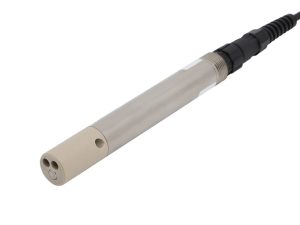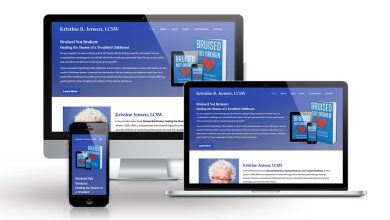The Science Behind Water Conductivity Meters: Measuring Purity and Contaminants

Access to clean and safe drinking water is a fundamental human right and essential for maintaining health and well-being. As urbanization and industrialization progress, ensuring that water quality meets safety standards has become an increasing challenge. One of the most important tools used to monitor water quality is the Water conductivity meter. This simple yet effective instrument provides critical data that helps ensure that the water you drink is free from harmful contaminants and safe for consumption.
In this blog, we’ll dive into how water conductivity meters work, why they are so crucial in drinking water quality control, and how they contribute to the management of safe water resources.
What is Conductivity and Why is it Important in Drinking Water?
Water conductivity refers to the ability of water to conduct electrical current, which is directly linked to the concentration of dissolved ions, such as salts, minerals, and contaminants. These ions, when dissolved in water, allow it to carry an electrical charge. The higher the concentration of these ions, the higher the conductivity.
Pure water, such as distilled water, has very low conductivity, as it contains few dissolved ions. On the other hand, water that contains dissolved minerals or contaminants, such as calcium, magnesium, sodium, or even pollutants like nitrates, will have higher conductivity levels.
While conductivity itself is not a direct indicator of specific contaminants, it serves as an excellent measure of water’s overall quality, and higher conductivity can signal the presence of substances that could potentially affect health.
How Water Conductivity Meters Work
A water conductivity meter works by passing a small electrical current through the water via two electrodes. The meter then measures the current flow, which is directly related to the water’s ability to conduct electricity. The more dissolved ions present in the water, the higher the conductivity will be. The meter will provide a conductivity reading, usually measured in microsiemens per centimeter (µS/cm).
Most modern conductivity meters are equipped with automatic temperature compensation (ATC), as water conductivity is temperature-dependent. For example, as the temperature of the water rises, its conductivity increases. ATC ensures that the conductivity readings are adjusted for temperature variations, giving accurate and consistent measurements.
Why Monitor Water Conductivity for Drinking Water?
The primary goal of monitoring water conductivity in drinking water is to ensure that it is safe for consumption and free from harmful contaminants. Here are several reasons why conductivity monitoring is crucial in drinking water quality management:
1. Detection of Contaminants
High conductivity levels can indicate the presence of dissolved substances that may be harmful to human health. These substances may include:
-
Heavy metals: Industrial pollution can lead to the presence of metals like lead, mercury, and cadmium in drinking water. High conductivity may signal contamination.
-
Salts and minerals: Excessive amounts of certain salts, such as sodium or chloride, can result in water that is unpalatable and unhealthy. Hard water, which has high concentrations of calcium and magnesium, can also affect water quality and health.
-
Agricultural runoff: Fertilizers and pesticides used in farming can leach into water sources and increase conductivity. Elevated conductivity may indicate the presence of nitrate or phosphate, which are harmful when consumed in large amounts.
By regularly measuring conductivity, water treatment plants and regulatory authorities can detect potential contaminants early and take corrective actions before the water reaches consumers.
2. Water Purity and Treatment Monitoring
In water treatment processes, conductivity meters play a crucial role in monitoring the effectiveness of purification treatments. For example, reverse osmosis (RO) systems and deionization units are often used to purify water by removing dissolved ions. The conductivity meter allows operators to assess the performance of these systems in real-time. If conductivity remains high after treatment, it may indicate that the system is not effectively removing contaminants, prompting further investigation.
Similarly, conductivity measurements can also help in adjusting chemical dosing in water treatment facilities, ensuring that water is adequately treated to meet drinking water standards.
3. Ensuring Compliance with Regulatory Standards
In most countries, drinking water quality is regulated by national and local authorities, who establish acceptable levels for various water quality parameters, including conductivity. In many cases, specific conductivity limits are set to ensure that the water does not contain harmful amounts of dissolved solids or contaminants.
By using conductivity meters, water utilities can ensure that the water they supply meets these regulations. Consistent monitoring helps prevent violations of water quality standards and allows for the timely adjustment of treatment processes to remain compliant with legal requirements.
4. Corrosion and Scale Control
In drinking water systems, high conductivity levels can lead to issues with corrosion and scaling in pipes, tanks, and plumbing fixtures. For example, high levels of dissolved salts, particularly sodium chloride, can cause saltwater corrosion in pipes, leading to leakage, rust, and water system failures. Monitoring conductivity levels helps utilities detect and mitigate these problems, ensuring the long-term reliability of water distribution infrastructure.
Additionally, elevated conductivity in water with high mineral content, such as calcium and magnesium, can lead to scaling inside pipes, boilers, and heating systems. Scale buildup not only reduces the efficiency of water systems but can also increase maintenance costs. By monitoring conductivity, water treatment professionals can take steps to prevent these issues.
5. Ensuring Consumer Health and Satisfaction
Drinking water with high levels of dissolved ions or pollutants can lead to a variety of health issues, including gastrointestinal problems, kidney stones, or even more severe long-term health effects due to heavy metal exposure. Monitoring conductivity levels is one way to ensure that drinking water meets safety standards, protecting consumers from harmful health risks.
In addition to health concerns, consumers are also concerned about the taste and appearance of their drinking water. High conductivity levels are often associated with hard water, which can have an unpleasant taste and cause staining on kitchen appliances and plumbing fixtures. Regular monitoring of conductivity helps to manage these issues and improve customer satisfaction.
Applications of Water Conductivity Meters in Drinking Water Systems
Water conductivity meters are used in various stages of water treatment, distribution, and monitoring processes. Below are some of the key applications in drinking water systems:
1. Water Treatment Plants
In water treatment plants, conductivity meters are used to monitor the water’s overall quality during each stage of the treatment process. From initial intake to filtration and disinfection, these meters provide real-time data on the water’s conductivity. If the conductivity level rises at any point, it can indicate the presence of contaminants or inefficiencies in the treatment process.
2. Real-Time Monitoring in Distribution Systems
Water conductivity meter are installed in water distribution systems to continuously monitor the quality of water as it is transported to consumers. These meters provide constant feedback, allowing utilities to quickly identify any changes in water quality and respond proactively.
3. Home Water Quality Testing
Homeowners who rely on private wells or other non-public water sources can use handheld conductivity meters to test the quality of their water. This provides them with an easy and inexpensive way to monitor the general purity of their drinking water and take action if elevated conductivity signals the need for further water treatment or filtration.
4. Regulatory Compliance and Reporting
Regulatory agencies responsible for monitoring public health and water safety rely on conductivity meters to verify that drinking water complies with legal standards. These agencies may use portable or stationary conductivity meters to conduct regular water quality testing and ensure that water utilities are adhering to set limits for dissolved solids and contaminants.
Conclusion
Water conductivity meters are invaluable tools in the ongoing effort to ensure safe and clean drinking water for communities worldwide. By monitoring conductivity levels, water utilities, environmental agencies, and consumers can detect contaminants, assess water treatment effectiveness, and ensure compliance with regulatory standards. Whether in water treatment facilities or at home, these meters provide essential information that helps protect public health and maintain the safety and quality of drinking water.
As global water resources face increasing pressure from industrialization, urbanization, and climate change, the importance of reliable, real-time water quality monitoring will only grow. By investing in high-quality water conductivity meters and implementing regular testing, we can ensure that future generations have access to safe, clean drinking water.









